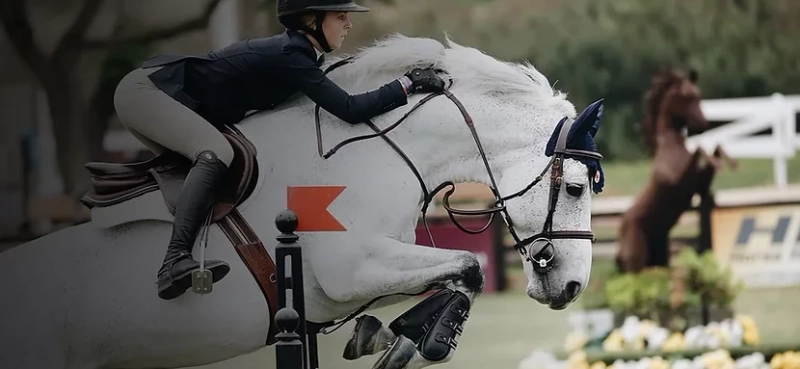Hocks
Your horse is leaning on the bit, unable to move effectively with his hindquarters. He doesn't push off with the force you know he possesses when he takes a fence. Is he becoming sluggish? Is he regressing in his preparation? Or are there hock issues?
The hocks are an important aspect of your horse's driving mechanism in the back end. Jumping and working at collected gaits, which need more hind-end effort, are particularly taxing on these hard-working joints. Tight bends and narrow circles, which exert twisting force and stress the hocks unevenly might cause problems. The joints might start to break down with time and miles, causing hock difficulties in horses.
However, there is some good news. Even if hock problems arise, you may take efforts to keep your horse working comfortably and extend his career by protecting them with hock boots for horses. We'll also go through on other task you can perform for a healthier hock in this post.
1. Foot trimming
The two main strategies to keep your horse's hocks healthy are to reduce concussions and fight inflammation. Maintaining proper and frequent foot trimming will assist keeping your horse's lower limb in the greatest possible position, reducing hock stress.
2. Enough rest
It is important to for your horse to get enough rest after workouts. In most circumstances, twenty-four hours between exercises is sufficient to let acute inflammation to diminish; keep this in mind during competitions if your horse is competing in many events on the same day. Hock boots for horses have by far been the best protection for many horses. You might as well want to try them out. Visit www.myhorsespeciality.com and get one that fits your horse.
Hooves
Damaged hooves, like hocks, can affect the horse's mobility. As a result, it is critical to maintain it as soon as possible by following the guidelines below.
1. Nutrition
Your horse's entire body, including its hooves, will benefit from a well-balanced diet. Provide high-quality horse food as well as lots of fresh water. A good feed will provide your horse with all of the vitamins and nutrients it requires to flourish.
2. The Farrier, Your Friend
Aside from the doctor, the farrier is one of the most crucial partners you and your horse have. Make sure you go with a reliable, experienced company you can rely on! The farrier trims hooves, inspects shoes, and diagnoses and corrects abnormalities including under-run heels, club feet, and flare in the hoof walls. They also change boots for horses, an important gear for any horse.
Removing horse boots is something you should learn from the farrier. Most farriers will gladly demonstrate how to do it, and your horse will appreciate it if you need to relieve it of pain and possibly hoof injury caused by a sprung or moved shoe. But luckily, horse boots from www.myhorsespeciality.com are super strong, soft and very thick long-lasting lining and above all fits every horse. So you wouldn’t have to worry about pain or moved shoe. Feel free to contact us on any inquires.
3. Picking.
One of the most crucial cleaning items you must have in your arsenal is a hoof pick. Contrary to popular belief, picking out your horse's hooves is your responsibility, not a farrier's. So prepare to be picky. Pry out any packed debris with the pick, gently cleaning out all of the nooks and crannies of each hoof. Remove any residual material from the sole using a scraper and a brush so that you can view the whole surface of the sole.
Above all, whether it's the feet, hocks, or tail, overall horse health counts. Talking about tail, did you know that you may protect your horse's tail from needles, debris, and other dirt? Yes, horse tail bag from www.myhorsespeciality.com is specifically created for this purpose. Visit them today for more information.


